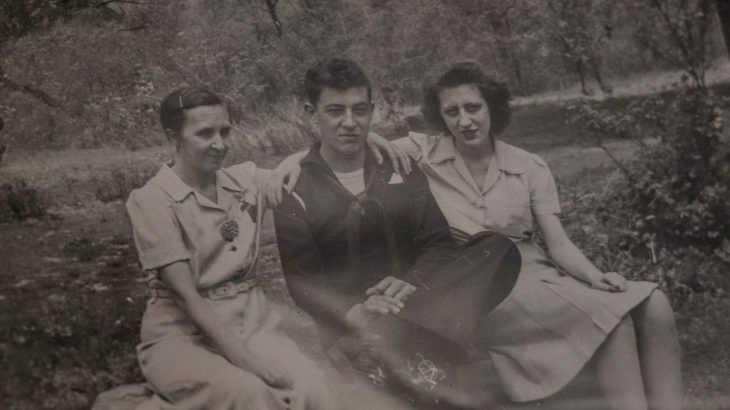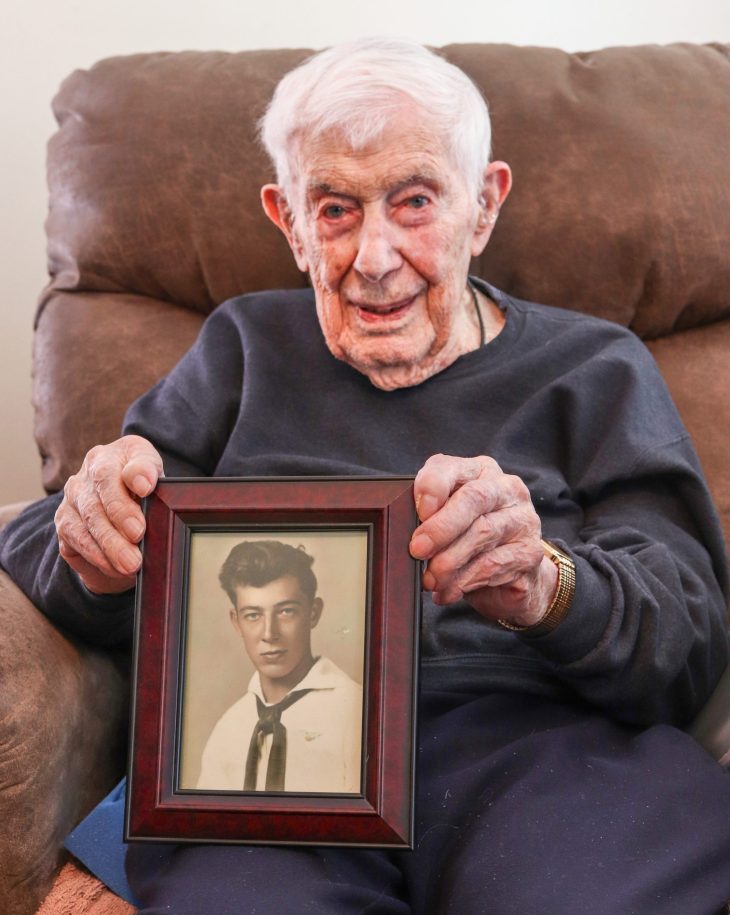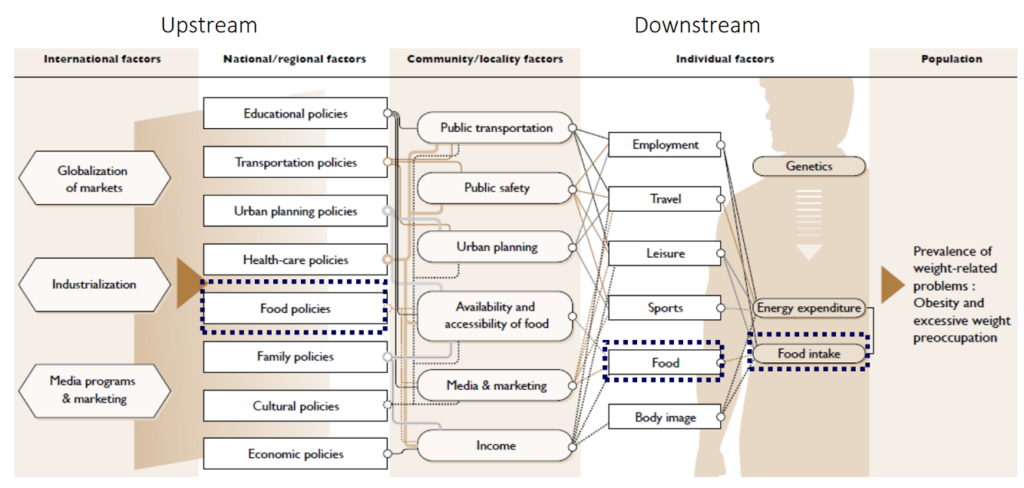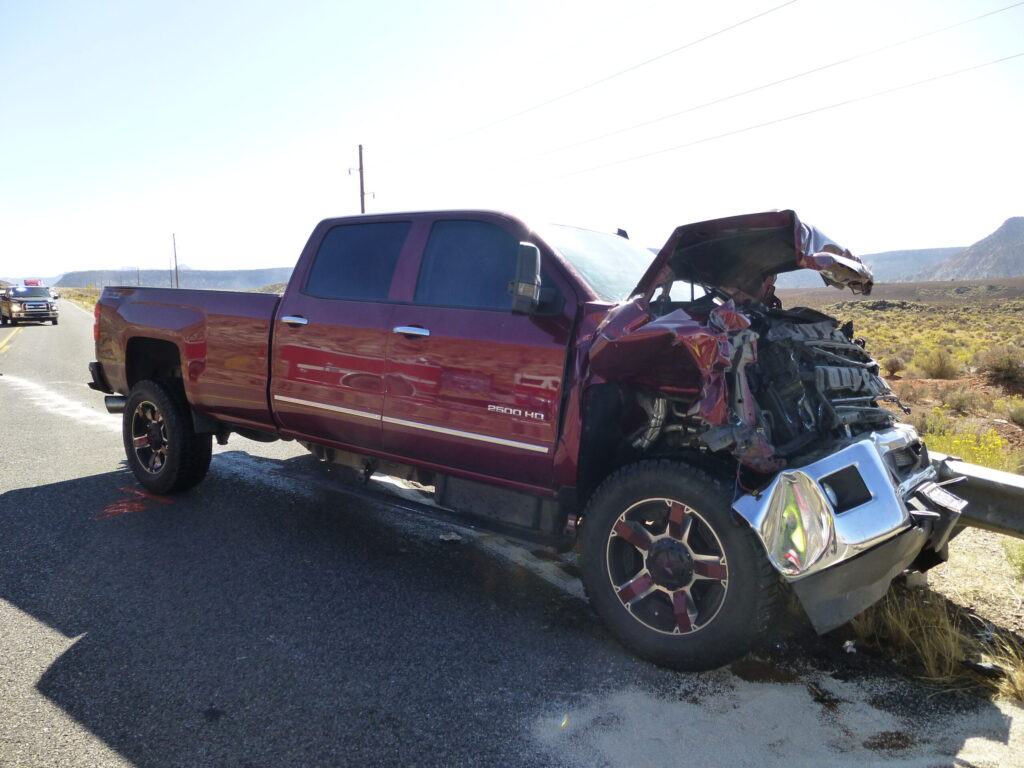
Humble WWII hero turns 100
When asked if he’s a hero, 100-year-old WWII Navy Veteran Emerson Pell gave a short, modest response. After pausing for a moment, thinking, then shrugging his shoulders, he said, “I was just a normal guy.”
A “normal guy” who dropped depth charges to damage enemy subs, survived a plane crash—11 hours on the water with swarming sharks—and served on the Galapagos Islands during wartime. Normal is relative.
Throughout his life, Pell has rarely been met with a loss for words. Reflecting on his contribution to preserving freedom across the world, he said “It’s just what had to be done, that’s all there is to it.”
That response, perhaps more than any other, is why Pell’s generation is referred to as “the Greatest Generation.”
From humble beginnings to naval service
Born in Glasgow, West Virginia, Pell was the son of a coal miner and the second oldest of 11 children. At age 17, Emerson’s father, Cloyd Pell, signed permission forms allowing Emerson to enlist in the Navy in 1943—a defining decision for a boy from the Appalachian countryside.
“The first time I saw electricity [in use] was when I joined the Navy,” Pell recalled.
After boot camp and various trainings, Pell became an Aviation Machinist Third Class, one of 12 crew members who operated patrol planes called PBM Mariner Seaplanes. The crew’s main role was to fly above the water monitoring for enemy German submarines. They would drop depth charges to disable enemy subs.
Pell’s roll was to operate firearms on the planes and repair them whenever needed. He was stationed across the Atlantic coastline, including in Central and South America, at the Panama Canal, and along the Pacific Coastline, including on the Galapagos Islands.
“The Navy changed my life, and opened my eyes to see the world,” Pell said, reminiscing about his time stationed in tropical climates. “Let me get some pictures here,” he said, while pulling out photos of the planes he served on, and snapshots of him in island environments.
Pell still recalls every intricacy of operating the planes.
“There were two inflatable tires on it. They put them on when the planes came to the ramp for takeoff… you had to fasten a clamp on top of them… and you had to weigh enough to shove it down in the water. I was too light,” he said. “The mate had to shove it down.”
Just as vivid to Pell is his survival of a seaplane crash.
“We were coming in from the Galapagos Islands up to the canal zone when we started going down and crashed in the water. The engines had water in ‘em, that’s what they theorized,” Pell explained. “We hit the water, and the plane bounced a couple times. My job then was to open the hatch on the top of the plane and put the life rafts out on the wings. But we didn’t need them, the plane floated! They had an instrument to crank that would send a signal out to other ships and aircraft. But the receiver was dead on the plane… we had no power, so we didn’t know if anybody was picking up our signal.”
As the day wore on, the sun went down and, in the water, Pell and his crew observed a frightening sight.
“We could see sharks. I was scared… about as white as that paper,” he said, motioning to a notebook.
Then, 11 hours after the crash, through the darkness came hope.
“We saw a search light coming… it was a destroyer coming out of the canal zone. They were looking for us. They received our signal and knew our position. Our pilot—he was a lieutenant, Smolsnick was his name—he got the signal out,” Pell recalled.
Life after the Navy
In March 1946, Aviation Machinist Third Class Pell returned to the United States, reporting to Norman, Oklahoma, for refresher school. That was the last time he’d see his air crew wings badge.
“I gave them to a girl I was sitting beside in study hall,” he said with a laugh.
But there was only one true woman meant for Pell.
After refresher school, he returned home to West Virginia, where he met Patricia Ann Patrick.
“I had to walk past her house every day for work,” he said with a smile. The rest, as they say, is history.
They married and had two sons and two daughters and eventually settled in Waynesboro, Virginia. Pell worked in various positions until his retirement at the age of 70. He used his military experience to receive an instrument certification to work in a nuclear powerplant and other energy sector jobs.
Pell’s Secret to Longevity
When asked what his secret elixir is to reach the 100-year milestone, Pell’s answer was simple: “a good marriage.”
Pell and Patricia Ann, or “Patty Ann” as some called her, were married for 64 years. She died nine years ago, but there’s not a day that goes by that Pell doesn’t fondly reflect on the love of his life.
“I couldn’t have found a better mate. She kept me straight, she was a good woman—that’s all there was to it,” he said.
Advice for Future Generations
When reflecting back over his last 100 years of life, Pell offered some basic advice to those who will live over the next 100 years: “I would tell them, even if they’re going into the service, get all the schooling they can.”
He added that all Veterans should take advantage of educational opportunities afforded by the G.I. Bill.
Another piece of advice he offered to Veterans: Choose VA.
“They’ve helped me stay alive, and I appreciate that. They gave me the chairs, ramp, and other things in my house that’ve helped me live in my home and I really appreciate that,” Pell said.
Through the Salem VA Health Care System, Pell receives Home-Based Primary Care, which is a program where doctors, nurses, physical therapists and even dietitians come to Pell’s home to give care, ensuring his health while allowing him to remain in the comfort of his Waynesboro home.
Pell has received health care through the Salem VA Health Care System since the 1960’s. To Veterans not enrolled in VA, Pell said directly, “It’s time to go sign up. Go to the Medical Center in Salem like I did.”
Recognition from VA
Just before his 100th birthday on February 26, Pell was presented with a framed letter of recognition from the Office of the Secretary for Veterans Affairs. He also received two commemorative challenge coins. One coin was the official coin from the Secretary of VA, and the other was a special 100-year centenarian Veteran birthday coin from the Salem VA Health Care System.
Jade Fillinger, chief of Salem VA’s Center for Development and Civic Engagement, presented the letter and coins to Pell.
A portion of the letter read, “For your legacy of patriotism and honor, Americans enjoy the blessings of peace and liberty because of patriots like you who answered the call to defend our nation.”
After hearing this read aloud, Pell smiled and said, “Thank you sir.”
Humble acceptance from an extraordinary man, part of an extraordinary generation few will ever equal.
Recommend0 recommendationsPublished in My Healthy Veteran, US National Health Agency Sources








